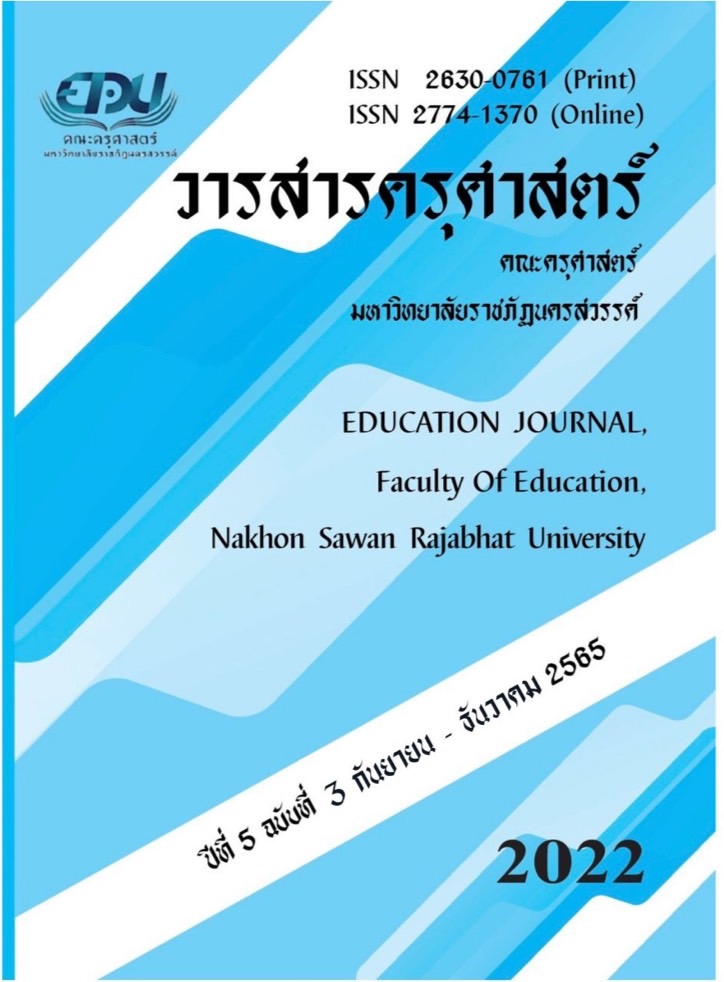Factors in Creating an Image of an Educational Institution in the Digital Age
Main Article Content
Abstract
The image of an educational institution was the overall image of an organization that a person perceives through experience or impression as well as feelings towards an agency or institution by the actions or behavior of personnel in educational institutions, administration, administrative products, and public relations. The duty of the image maker of the educational institution with important factors were: 1) giving positive facts (Positive Fact), 2) persuading the target group to use measures that were beneficial to educational institutions to use in evaluating educational institutions for guidance; and 3) encouraging personnel to create impressive first-hand experiences for visitors. The image could occur in two cases: 1) the spontaneously according to the environment without any action by the educational institution, and arises from creativity through the process of creating the image that the educational institution wishes to be; and 2) through various media. The factor that contributes to the image in the educational institution was creativity in the organization, honesty, sincerity, trust, participation in creativity and appropriate public relations. The image characteristics of educational institutions in 3 aspects were 1) the image could change according to the events that occur according to feeling and attitudes of the people at that time towards educational institutions; 2) the image inherited from the former administrator both good and bad were difficult to correct.,3) abstract image that was important aspect of the image in the educational institution arising from advertising which could be quickly formed and disintegrated but a concrete image such as acts of service to society the creation of public benefits that were objects which could be a permanent image. Therefore success in creating image of the educational institution in addition to the actual and public relations stakeholders must relate parties and there was participated as much as possible in any way by listening personnel in educational institution and must be good listeners when there were people who come to coordinate. Moreover must do what the service users want to be successful and the results of building a reputation for educational institutions in the digital era would be effective 4 aspects 1) student development, 2) teacher quality, 3) creation of unique innovative curricula, and 4) development of extracurricular activities.
Downloads
Article Details

This work is licensed under a Creative Commons Attribution-NonCommercial-NoDerivatives 4.0 International License.
References
กันตยา เพิ่มผล. (2551). การพัฒนาประสิทธิภาพการทำงาน. กรุงเทพฯ: สถาบันราชภัฏสวนดุสิต.
วิจารณ์ พานิช. (2556). การจัดการความรู้ฉบับนักปฏิบัติ. วารสารการบริหารและพัฒนา มหาวิทยาลัยราชภัฏสกลนคร, 2(3): 203 - 216.
ใจทิพย์ ศรีประกายเพ็ชร. (2552). การศึกษากลยุทธ์การประชาสัมพันธ์และประสิทธิผลการสร้างภาพลักษณ์ของโครงการดาวเทียมไทยคม. วิทยานิพนธ์นิเทศศาสตรมหาบัณฑิต (การสื่อสารมวลชน). จุฬาลงกรณ์มหาวิทยาลัย.
วรรณกมล ทัพขันธ์. (2560). การเปิดรับนิตยสารแจกฟรีและอิทธิพลต่อประชาชนในเขตกรุงเทพมหานคร. วารสารวิชาการระดับบัณฑิตศึกษาจากการประชุมวิชาการการสื่อสารระดับชาติ คณะวารสารศาสตร์และสื่อสาร มวลชนมหาวิทยาลัยธรรมศาสตร์, 9(2).
วีระวัฒน์ อุทัยรัตน์, และ เฉลิมชัย หาญกล้า. (2546). คุณภาพ: ความสำเร็จที่ต้องเริ่มจากภายในสถานศึกษา. วารสารวิชาการ, 6(1): 49 - 55.
Dienen, E. (2000). Subjective Well-being: The Science of Happiness and a Proposal for a National Index. American Psychologist, 55(1): 34 - 43.
Hughes, L. W. (1999). The Principal as Leader. (2nd ed.). New Jersey: Prentice-Hall, Inc.
Joseph W. Alba, & J. Wesley. (2008). Hutchinson. UT: Association for Consumer Research.
Zerfass, A. (2011). Assuring Rationality and Transparency in Corporate Communications. Theoretical foundations and Empirical Findings on Communication Controlling and Communication Performance Management. International Public Relations Research Conference, 947-966. Gainsville, FL: Institute for Public Relations.


